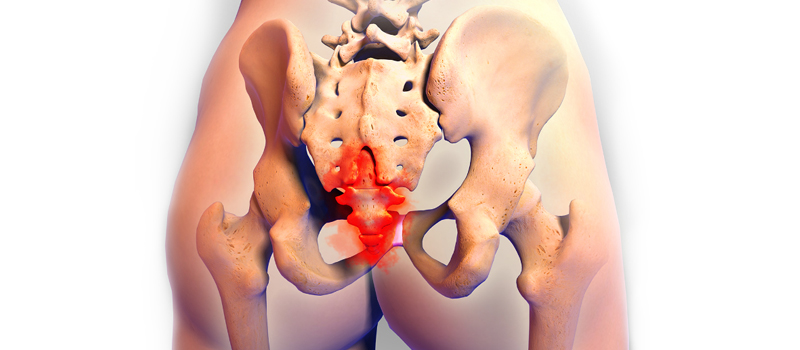Tailbone pain, also known as coccyx pain or coccydynia, is characterized by pain and tenderness felt in your tailbone and the area that surrounds it, just above your gluteal area. This condition is more commonly experienced by women. Depending on the cause, the pain can be persistent, lasting from a few weeks to several months. This can definitely affect your daily life, most especially if your work includes sitting at your desk or driving for long hours every day.
Facts About Your Tailbone
Your tailbone is medically referred to as coccyx. It is the end part of your spine, composed of 3-5 coccygeal vertebrae that are fused together with a slight inward curve. There are many muscles, ligaments, tendons, and nerves that are attached to your coccyx. These structures are important in maintaining the integrity of your pelvic floor as well as in maintaining and controlling bowel movement. Your coccyx bears some of your weight when you are sitting and together with your ischial tuberosities (also known as the sitting bones), they form a tripod when you’re in a sitting position. When you lean backward on your seat, your coccyx bears most of your weight.
Signs and Symptoms of Coccydynia
The major symptom of coccydynia is a persistent pain, most especially when touched (tenderness) in your tailbone and the surrounding area. The pain in coccydynia can present with the following characteristics:
- A persistently dull pain with sharp pains in between.
- Pain that gets worse when a mild pressure is exerted on the area like when you are sitting while leaning backward.
- The pain can also get worse upon movement like when you are shifting from a sitting to a standing position, when you are defecating, bending over, or even when having sex.
- You can also experience pain when you are standing for long periods.
- Driving can be painful and uncomfortable and will make you want to lean forward to prevent your tailbone from absorbing more weight.
Common Causes and Risk Factors for Tailbone Pain
The causes of tailbone pain can be abrupt and non-abrupt. Abrupt causes include childbirth and fall-related accidents. Non-abrupt causes include prolonged sitting and repeated strain on the tailbone, being overweight, and having a poor posture. Some cases of tailbone pain, however, have no known cause.
A major risk factor for tailbone pain is increasing age. Older people experience degenerative changes in their bones, including their spine, making them at risk of suffering from tailbone pain. As you age, you also have diminished cushioning when sitting due to the loss of fat and muscle mass in your buttocks.
Being a woman is also a risk factor for tailbone pain. During childbirth, a significant amount of pressure may be exerted on the mother’s tailbone as the baby passes through the birth canal.
Simple Tips and Remedies for Tailbone Pain
If you are suffering from tailbone pain, you need to know the reason behind it and apply certain measures to alleviate the pain.
- Avoid sitting on hard surfaces.
- Choose chairs that have adequate padding and cushioning.
- Limit your sitting to 30 minutes at a time.
- If sitting for long periods can’t be helped, like when driving through traffic and doing your desk job, invest in the best tailbone cushions that can provide you with some comfort and adequate support.
- When sitting, lean forward a little in order to relieve some pressure on your tailbone.
- Do not wear tight clothing, especially tight pants. Opt for comfortable and loose clothes.
- Maintain a good posture.
- Watch your diet and lose extra weights.
- Apply a cold pack or a heat pack on the affected area to help alleviate the pain.
Tailbone pain can be really detrimental to your everyday life. If the pain persists even after doing these tips, consult your doctor for further diagnosis and treatment options.

